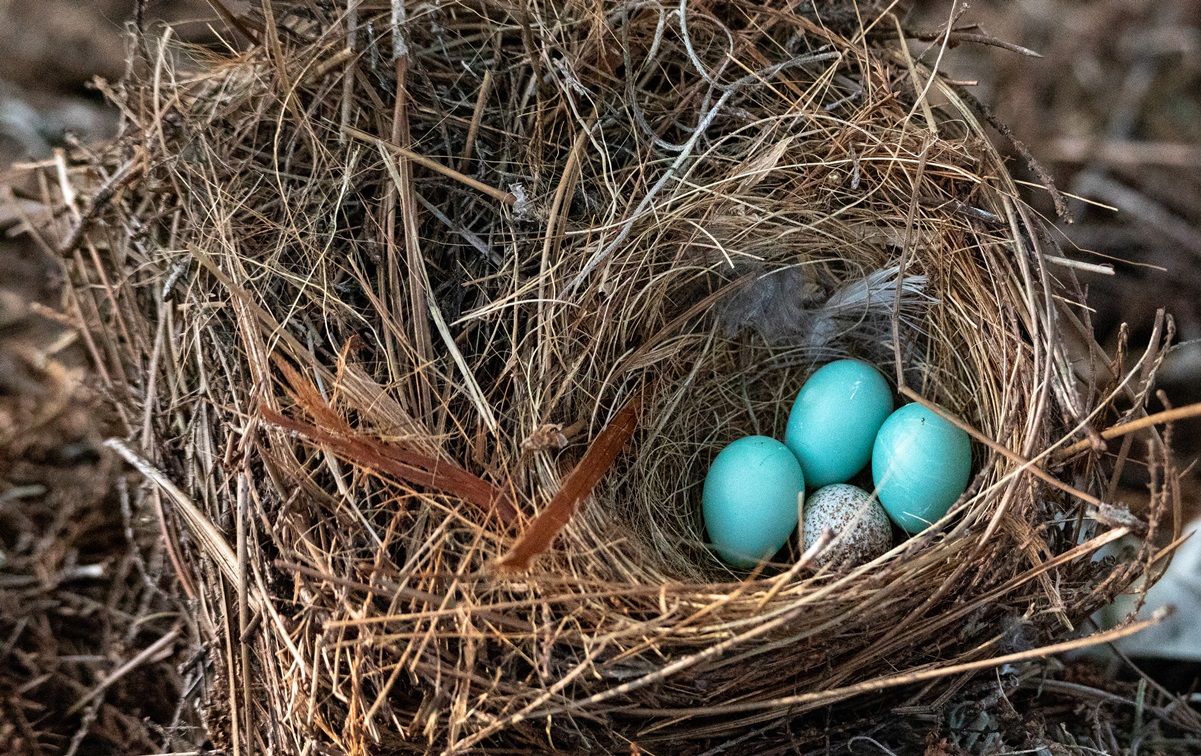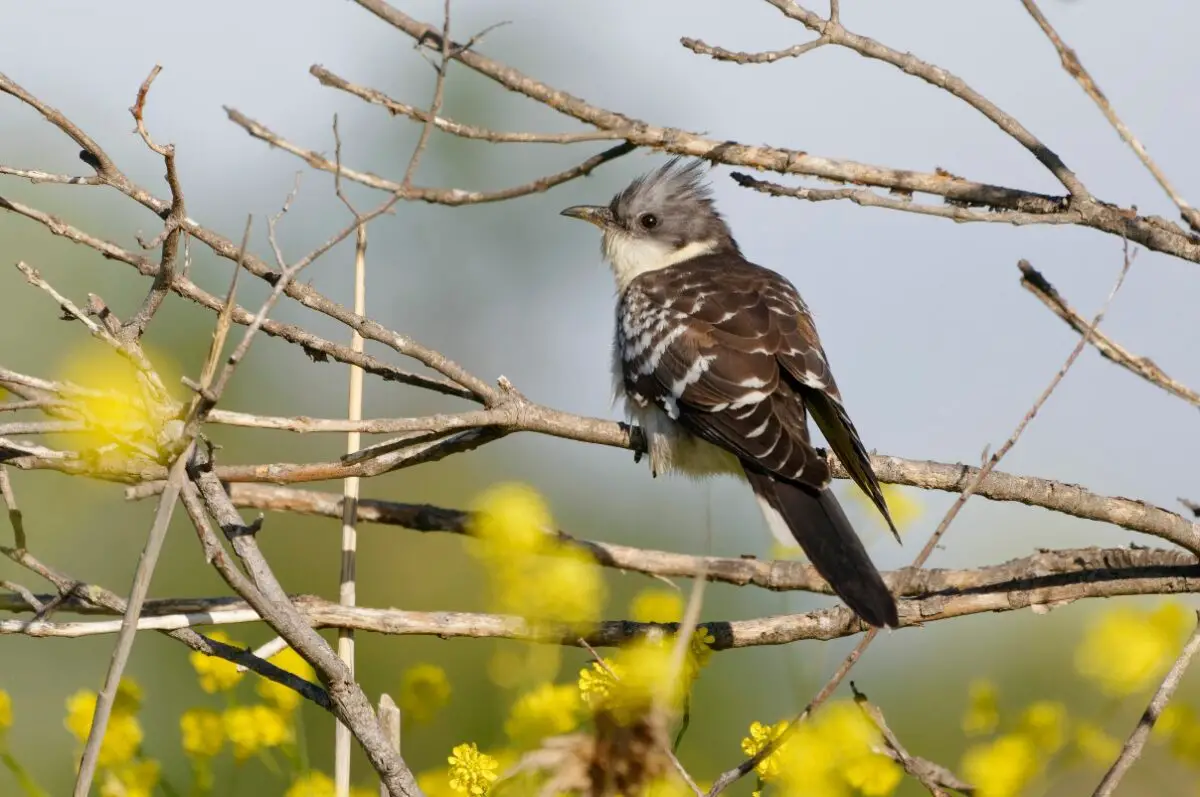If you’re a bird-watching enthusiast and have been observing birds during the nesting season, you’ve probably noticed that some incubate one or two eggs that are slightly different from the others. They may be a bit larger or smaller or have a different color.
So what’s the reason behind this behavior? Do they care for other birds’ young out of the goodness of their hearts? And how did these eggs end up in their nests in the first place?
Some bird species are brood parasites, which means they parasitize the host species’ nests by laying their eggs there. They have adapted to mimicking the eggs of the host species. They do so because this relieves them of the duties of caring for the young. They can continue reproducing at the desired rate and, at the same time, care for themselves.
While this behavior may sound a bit shocking, since this is a kind of bullying between species (you’ll soon learn why), we cannot deny that obligate brood parasite species are experts at adapting and ensuring the survival of their species! Some lay as many as 50 eggs per season!

Do Birds Lay Eggs in Another Bird’s Nest?
Some birds lay their eggs in another bird’s nest. This behavior is called brood parasitism, which is defined as a phenomenon implying that a species relies on other birds to raise their young. Brood parasitism can occur between members of the same species and members of different species.
Brood parasitism is considered an evolutionary strategy. By laying their eggs on other birds’ nests, the parasitic parents are excused from the responsibility of building the nest, incubating the eggs, and caring for the young.
However, things are easier said than done. Engaging in blood parasitism implies certain adaptations, among which the most important is egg mimicking. Some birds mimic the color of the eggs, while others can also mimic the size of the egg.
Another adaptation is laying eggs with a thicker shell, which may be linked to the host species’ attempt to break the shell and kill the embryo before it hatches.
Why Do Birds Lay Eggs in Another Bird’s Nest?
Besides the fact that the parasitic species is relieved of nesting duties, brood parasitism is linked to a phenomenon called the evolutionary arms race, which is a competition between species.
In this situation, it occurs between the coevolution of the parasite and the host because the host is damaged, as it has to put effort into caring for an additional hatchling. The parasite, on the other hand, can continue laying eggs and still care for its personal needs.
Why Do Host Species Care For Other Birds’ Young?
Well, if only they could refuse to do this! First and foremost, removing the egg/s from the nest isn’t easy. But even if they manage to do so, they don’t get away with it, as the parasite species may subsequently destroy the nest.
This occurs because the parasite species keeps a close eye on the parasitized nest. It returns repeatedly to the spot to check if the egg is safe. If the egg has been removed, the parasite species destroys the nest. Scientists call this behavior the mafia hypothesis and has been observed between the great spotted cuckoo (the parasite species) and the European magpie (the host species).
Some birds may even choose to leave their parasitized nests altogether and build others. But this method isn’t working in their favor, as the newly-built nests will probably be also parasitized.
Furthermore, some birds may not even recognize that the eggs aren’t theirs. Sure, many species manage to recognize the size and the color of their eggs, but some parasite species are so well-adapted to egg mimicking that sometimes the difference is unnoticeable.

What Birds Use Other Birds’ Nests?
Hundreds of bird species engage in either intraspecific or interspecific brood parasitism. More than 50 of them are cuckoo species! Check out the list below for some shocking facts about five obligate brood parasite bird species and one that occasionally engages in intraspecific brood parasitism!
1. Great spotted cuckoo (Clamator glandarius)
This species is widely distributed in the Mediterranean Basin and throughout Africa. It has often been observed laying its eggs in Eurasian magpie nests.
Sometimes it also parasitizes carrion crow nests, which is actually a good thing because carrion crow chicks have a higher chance of survival if they grow alongside a great spotted cuckoo chick. However, if food is scarce, great spotted cuckoo chicks may harm or even kill the host chicks.
2. Brown-headed cowbird (Molothrus after)
The brown-headed cowbird lives in the North American temperate and subtropical regions. During one breeding season, brown-headed cowbirds can lay as many as 36 eggs! They are obligate brood parasites that lay eggs in the nests of over 200 host species. Some of them are raptors, hummingbirds, and house finches.
However, unlike nests parasitized by great spotted cuckoos, nests parasitized by brown-headed cowbirds are at a higher risk of predation. Some scientists believe this is caused by the fact that the parasite nestling produces begging calls and attracts predators.
3. Cuckoo-finch (Anomalospiza imberbis)
Cuckoo-finches are native to Africa. They choose cisticolas and prinias as host species and deliver white, pink, or blue eggs with distinctive brown or red markings.
4. Village indigobird (Vidua chalybeata)
Like cuckoo-finches, village indigobirds are native to Africa and live in various types of habitats. They typically choose red-billed firefinches as host species and their eggs are usually a bit larger than those of the host.
Village indigobird nestlings have adapted to mimicking their nest mates by displaying their distinctive gape pattern!
5. Common cuckoo (Cuculus canorus)
The common cuckoo spends its winter in Africa and its breeding season in Eurasia. These birds are known to be able to mimic the eggs of more than 100 species, among which Eurasian reed warblers, meadow pipits, European robins, and common redstarts.
While other nestlings coexist happily with their nest mates, common cuckoo chicks may roll the host eggs out of the nest. Even if they don’t do so, they’re much larger than host nestlings and bully the host parent into providing more food and care.
6. Common starlings (Sturnus vulgaris)
The common starling isn’t an obligate brood parasite. However, intraspecific brood parasitism is quite common. Common starling nests may also be parasitized by lesser honeyguide birds.
